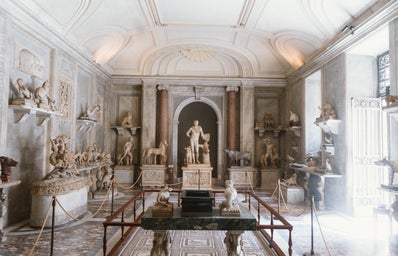For the last two years I volunteered at the Pankhurst Centre in Manchester, the former home of Emmeline Pankhurst and now a museum dedicated to the Suffrage movement. Preferring to encourage visitors to simply make a donation, the centre does not charge an admission fee. This donation is completely optional, making the Pankhurst centre effectively free to the public. However, this is not reflective of all museums in the UK, as many continue to charge. This raises some significant questions: Should all museums be free? Who pays for museums if they are free? And does making museums free encourage a wider demographic of visitors?
In 1997 the Labour government made a commitment to reinstate free entry for national museums in order to encourage a diverse range of visitors. This was driven by a desire to ensure equal access to the heritage and education that museums offered. Subsequently entry charges were dropped in many national museums in 2001, including the British Museum, the National Gallery and the Tate. Today free entrance is standard practice in all UK national museums, the majority being in London, but many local museums continue to charge an admission fee.
The main argument for free museums is that everyone should have access to culture regardless of socioeconomic background. Museums teach people about history, politics, science and art; all of which are incredibly important. They can inspire people in their future careers or make people think about the world around them. At the Pankhurst centre people learn about the struggle for womens’ rights, provoking discussions about contemporary feminist ideas in turn.
I volunteered at the centre on the day of the last general election in 2019, when one visitor really caught my attention. This visitor had stated that she had no intention to vote as she felt that the election didn’t impact her life. I spoke to her about the Pankhurst family and toured her around the museum. At the end of the tour, she turned to me and said that she now did want to vote, seeing the struggle of the suffragettes had inspired her. That is the power a museum can have! This particular woman had been passing the centre on her lunch break and had decided to stop by and have a look around. She apologised that she didn’t have any money on her to donate and stated that she hadn’t brought any with her. If the centre hadn’t been free that day, she wouldn’t have been able to visit and therfore wouldn’t have been inspired to vote. Free museums encourage people from all different backgrounds to engage with culture and society, regardless of how much money they have.
The argument commonly made against museums being free is that taxpayer money is being used to fund them. In 2013 the BBC published that museums and art galleries cost the taxpayer more than £350 million a year. Alongside this, it is estimated that half of museum visitors come from overseas. The British public is arguably paying for something that they don’t use themselves. In times of austerity, it has been argued that admission charges should be reintroduced to save public funds. However, the fact that visitors come from abroad shows that museums are an important aspect of tourism, a huge part of the British economy. Keeping museums free could encourage more tourists into big cities like London. In addition to this, museums could be considered a necessary taxpayer cost as they protect our culture and our heritage and keeping them free ensures that everyone has access to this.
What do you think: Should museums be free?



